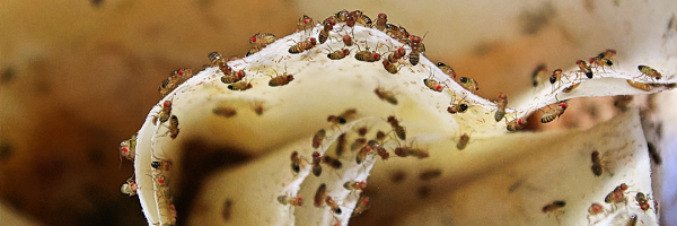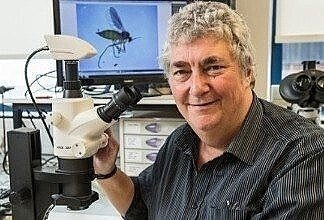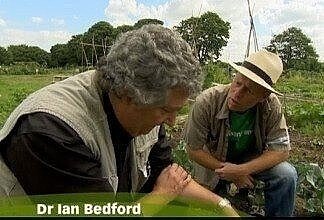
The Fruit Fly: A Familiar Nuisance
3 Minute Read
Dr Ian Bedford tells us everything we need to know about the 'bug of the month' for May, the fruit fly.At any time of the year, it will be common to see small black flies in homes throughout Britain, flying around a bowl of fruit.
Not to be confused with Fungus gnats (that can be a pest of houseplants, laying eggs into damp compost where their larvae hatch to feed on the plant roots), these little flies will invariably be the common Fruit fly Drosophila melanogaster who will have used their powerful sense of smell to detect and home in on the gaseous emissions of fruit that has started to decay and ferment.
Gathering on the fruit, the flies will mate and feed on juices that ooze from the fruit before the females begin laying eggs into the fruit’s softening flesh.
Eggs that will hatch within just a few hours into little maggots that begin feeding and burrowing into the rotting pulp.
Rapidly maturing, the maggots then pupate before hatching as the next generation of adult fruit flies. A life cycle that can be completed in as little as 10 days.
But, as annoying as these fruit flies might be when they appear in the home, their presence is a useful natural indicator that it’s probably time to sort through the fruit and dispose of any that have become too decayed.

A Tiny Powerhouse in Scientific Research
Interestingly though, fruit flies now have a much more valuable use to us than just an indicator of over-ripe fruit, since they have become a valuable model organism for scientists who study biotic systems.Their rapid lifecycle, their ease of maintenance within a laboratory and the recent mapping of their whole genome, have enabled fruit flies to become one the world’s most widely used and important organisms in genetic and biological research.
And although they have a genome that’s 25 times smaller than our human genome, many of their genes correspond to ours and control the same biological functions.
Allowing them to be used as a genetic model for the study of human diseases such as Parkinson’s and Alzheimer’s, and also, in the quest to understand the mechanisms of aging, drug resistance, diabetes and cancer.
So, maybe the next time fruit flies are being a bit of a nuisance around the fruit bowl, it’ll be worth sparing a thought for just how important they’ve become in helping us understand biotic systems and improve key aspects of human health and wellbeing.

About Dr Ian Bedford
Ian has been fascinated by the bug world for as long as he can remember. From studying butterflies on the South Downs as a youngster, he went on to pursue a career in Research Entomology and ran the Entomology Dept at the John Innes Centre in Norwich up until his recent retirement.VISIT WEBSITE

'Bug of the month'
Visit our 'bug of the month' archive.
Every month Ian will share his knowledge on how to protect your plants and gardens from preventable pest invasions while providing valuable insights into the insects regularly found in our gardens.
find out more
Comments (0)
Why not be the first to send us your thoughts?
